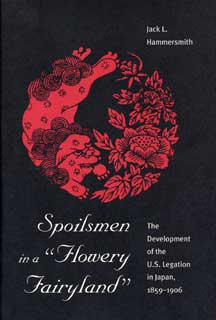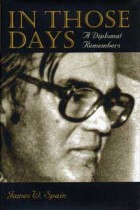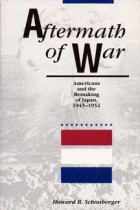Spoilsmen in a “Flowery Fairyland”
The Development of the U.S. Legation in Japan, 1859–1906
Diplomatic Studies, European & World HistoryJack L. Hammersmith
Between 1859, when the United States established its first legation in Japan, and 1906, when the legation became an embassy, the United States and Japan positioned themselves for greater regional and world roles. American diplomats who served in Japan during those years ranged from the economically self-serving (Robert Pruyn) to the professional (Lloyd Griscom), but they all participated to varying degrees in the remarkable changes of the late Tokugawa and early Meiji eras.
Often criticized for their lack of professionalism, these diplomats reflected the absence of a professional foreign service as well as the low priority accorded them by Congress (the failure to fund a competent language program was only one example of congressional parsimony and myopia). Yet, many of the diplomats did decent, sometimes admirable jobs. In speaking for American concerns, reporting accurately on conditions in Japan, implementing Washington’s instructions effectively, and frequently exercising sound, independent judgments, they often gave the U.S. solid and respectable representation that far exceeded the partisan origins of their appointments or the limited knowledge they had of their host country.
In Spoilsmen in a “Flowery Fairyland,” Jack L. Hammersmith examines in detail the first eleven American ministers to Japan, exploring the information, expectations, and values they took with them and how they shaped U.S. diplomacy with Japan in the late nineteenth century. Of particular interest, he shows that the issue of trade, a dominant contemporary concern, was an ongoing nineteenth-century problem as well.
“This work provides an intimate view into the different men who held ministerial positions, showing us not only their American backgrounds but the particular skills and personality traits that helped them to come to grips with the Japanese environment. It further reveals the process by which Americans sought to wrestle with problems in Japan, including an ongoing trade imbalance with the United States, that strike us as highly contemporary. It suggests that if there was a need for professional diplomats to replace amateurs in the U.S. Foreign Service by the turn of the century, the world of such amateurs, which this study reveals, was often more colorful and richly textured than that which followed.”—Fred G. Notehelfer, author of American Samurai: Captain L. L. Janes and Japan
Jack L. Hammersmith is a professor of history at West Virginia University. His articles have appeared in Historian, Virginia Magazine of History and Biography, Indiana Magazine of History, and Pacific Affairs.





